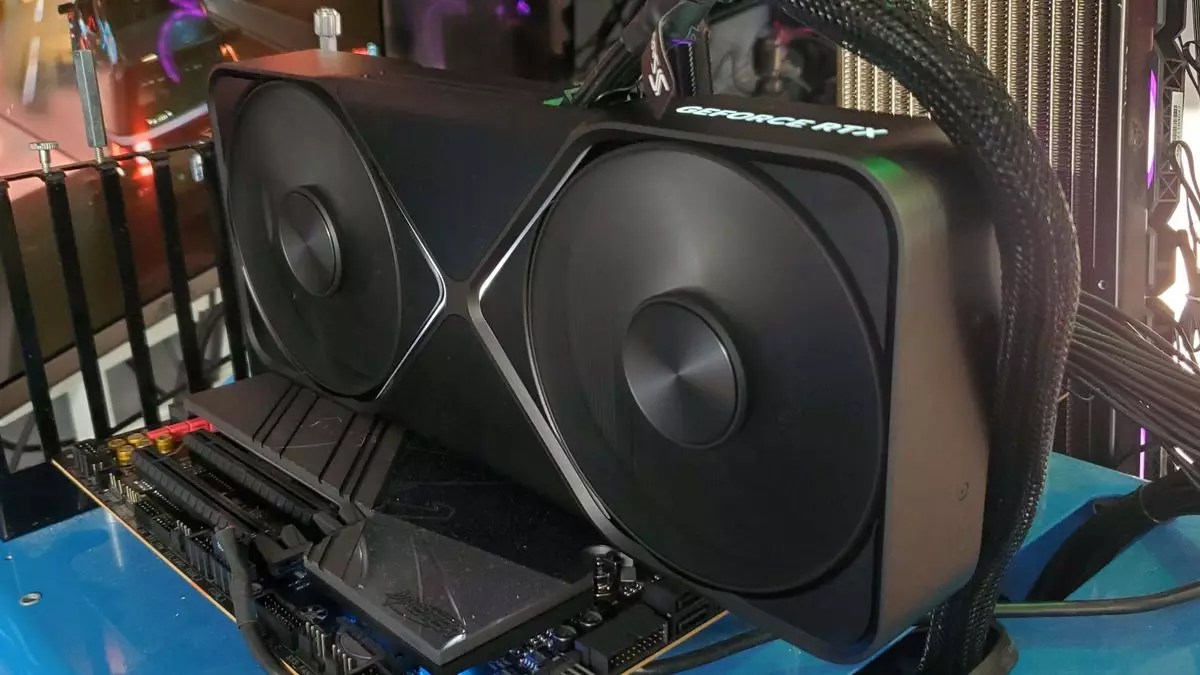The recent release of NVIDIA’s RTX 5090 has set the gaming world abuzz with excitement, especially among tech enthusiasts who are eager to push their gaming rigs to the limit. However, the thrill of upgrading comes with the need for caution, particularly when it comes to the power delivery system that underpins this high-performance graphics card. Recent insights from industry experts emphasize the importance of adhering to proper practices regarding power cables, adapters, and extenders.
Among the enthusiasts who have managed to acquire an RTX 5090, there is a natural inclination to showcase their new hardware with fancy power cables that enhance the visual appeal of their setups. However, this desire for aesthetics can cloud judgment, leading to potentially hazardous decisions. Aris Mpitziopoulos, CEO of Cybenetics and an authority on power supply units (PSUs), explicitly warns against the use of third-party adapters and extenders. His advice is straightforward: “Do not buy adapters or extenders.”
This recommendation stems not only from the risks of insufficient power delivery but also from more severe consequences such as overheating, which could lead to catastrophic damage. The RTX 5090 demands substantial power, with current requirements reaching up to 48 amps, which amplifies the importance of selecting the right cabling solutions to handle such intense workloads.
Mpitziopoulos articulates that the issue doesn’t lie within the 12V-2×6 cables designed for the RTX 5090 itself but rather in the possible incompatibilities when using cables from different manufacturers. He states that while all 12V-2×6 cables should theoretically be able to deliver up to 600W (or 55A), the reality is more complex. Many PSUs do not come equipped with dedicated 12V-2×6 connections and instead utilize older designs that may require adapters to fit the new standard. This discrepancy can lead to unsafe configurations, as using an adapter from an unreliable source could create connection points prone to overheating and failure.
Mpitziopoulos explains that certain models, like Corsair’s 2024 Shift RM PSUs, utilize a split connector system, which complicates matters further. The potential for misfit cables or adapters increases the risk significantly, presenting a legitimate concern for users eager to leverage the power of an RTX 5090 without fully understanding the implications.
As the technology landscape evolves, new standards emerge to provide safe and efficient power delivery. With the introduction of the 12V-2×6 connector system, manufacturers have sought to address past issues, and it is now crucial to understand the significance of using cables specifically designed for these graphics cards. While the aesthetics of power cables may lead some gamers to pursue flashy options, it is imperative to prioritize functionality and compatibility over looks.
Mpitziopoulos clarifies that while third-party adapters and extenders are not recommended due to the lack of guarantees regarding compatibility with various PSUs, NVIDIA’s official products that come with the GPU itself are reliable. He emphasizes the importance of proper power delivery directly from the source and discourages users from taking chances with non-standard connections that may jeopardize their system’s safety.
For those who are considering investing in an RTX 5090 or even the RTX 5080, the selection of a suitable PSU becomes a critical aspect of the upgrade process. Ensuring that the PSU has a native 12VHPWR socket or is compatible with 12V-2×6 cables should be a top priority for anyone looking to maximize the potential of their new graphics card. Mpitziopoulos’ professional advice is particularly telling: a clearly designed and properly rated power system will greatly reduce the risks of overheating and equipment failure.
Additionally, the necessity of using quality components cannot be overstated. High-performance components demand dependable support systems. Failure to accommodate such requirements can result in damage, not only to the new GPU but also to the entire computer rig.
As the capabilities of gaming hardware continue to escalate, so too do the responsibilities of the user to understand and manage these powerful systems correctly. The allure of the RTX 5090 might be enticing, but prioritizing power supply compatibility, avoiding dubious third-party solutions, and seeking advice from credible experts is essential for a safe and enjoyable gaming experience. The thrill of gaming shouldn’t come at the expense of hardware integrity—make informed choices and invest wisely!


Leave a Reply